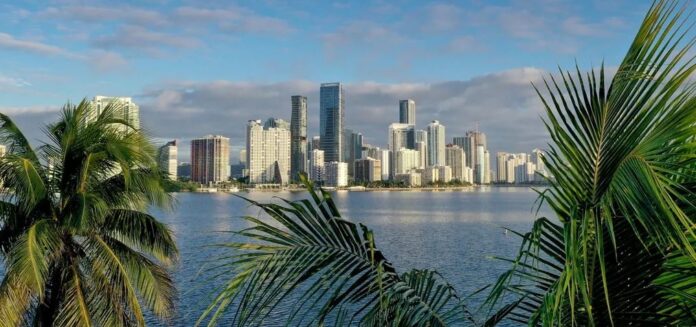SUNNY ISLES BEACH, Fla. : Nearly three dozen high-rise condominiums and luxury hotels along South Florida’s coastline are sinking or settling in unexpected ways, according to a newly released study. Researchers attribute the changes in some cases to nearby construction activities.
The study, conducted by scientists at the University of Miami’s Rosenstiel School of Marine, Atmospheric, and Earth Science, surveyed 35 buildings along a 12-mile (19-kilometer) stretch from Miami Beach to Sunny Isles Beach. The analysis revealed that these structures have sunk or settled between 0.8 to 3.1 inches (2 to 8 cm). Notably, about half of the buildings affected are less than a decade old. The findings were published on Friday.

“The discovery of the extent of subsidence hotspots along the South Florida coastline was unexpected,” said lead author Farzaneh Aziz Zanjani in a statement. “The study underscores the need for ongoing monitoring and a deeper understanding of the long-term implications for these structures.”
While it’s common for buildings to experience slight settling during or shortly after construction, researchers described their findings as surprising. Some buildings showed evidence of settlement several years after completion.
The geological composition of South Florida’s coastline is a contributing factor. Limestone beneath the beach is interspersed with layers of sand, which can shift under the weight of high-rises and from vibrations caused by construction. Tidal flows and construction projects up to 1,050 feet (320 meters) away have also been linked to the settling. Using satellite images, researchers documented the changes, with the most notable shifts observed in buildings located in Sunny Isles Beach.
Preliminary data suggests that settling may also be occurring further north, affecting the beaches of Broward and Palm Beach counties.
The surveyed area includes Surfside, the site of the Champlain Towers South collapse in June 2021, which claimed the lives of 98 people. However, experts believe that collapse was caused by deteriorated reinforced concrete, flawed design, and inadequate maintenance, rather than subsidence alone.
Even so, the Surfside tragedy heightened awareness about the importance of monitoring building stability, especially in coastal areas with corrosive environmental conditions, the scientists emphasized.
Researchers aim to investigate whether different sections of the impacted buildings are sinking at different rates. Such variations could result in cracks in walls, utility line breaks, and other structural damage over time.
The findings align with a separate study published earlier this year by Virginia Tech and the U.S. Geological Survey. That research found that buildings in major Atlantic Coast cities — including New York City, Long Island, Baltimore, and Virginia Beach — were sinking at a rate faster than the rise of seawater.
The South Florida study has sparked calls for increased monitoring and inspection of coastal high-rises, as scientists warn that further settlement could pose long-term risks to the region’s skyline and infrastructure.



